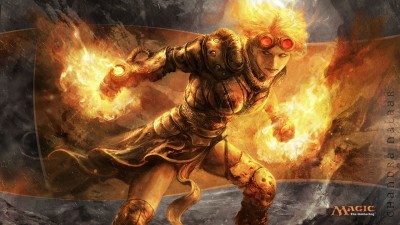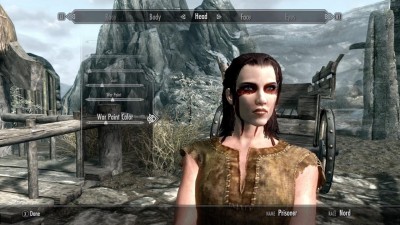It’s been another interesting week, with that AT&T purchasing Direct TV for$49.8 billion and Google subsidiary YouTube making an under-the-radar bid for Twitch TV - for a reported $1 billion. Both are important to videogames, as media consolidation is slowly beginning to touch the industry. Until now, Twitch has provided a counterbalance to YouTube and their string of copyright protection claims against their content providers. The question of the week is - will Twitch change its stance copyright protection for its content generators? Dave Tach of Polygon outlined the issues that have been raised, and the full ramifications of the acquisition.
In an inevitable but interesting turn, Microsoft announced that they will be removing the Kinect device from Xbox One and lowering the price to match PlayStation 4. This is unfortunate as Microsoft is doing yet another back pedal since their disastrous E3 press conference of last year. It may also be premature to drop Kinect after a few short months after the launch of the Xbox One, before developers and consumers really had a chance to fully experience the device. Ourcade Games takes a look back at the last console generation and how Microsoft ignored the changes in the industry.
While not being entirely about videogames Wizards of the Coast’s Mark Rosewater discussed how the company behind Magic the Gathering categorizes players of their game. It is an interesting look that can easily be projected on to videogame players and how they competitively play. There is Timmy the “Power Gamer,” Johnny with the “My Way” style of play, and Spike the “best build” player, who will copy the best strategies for himself. There are also combinations of the three categories of characters, and there are many parallels with videogames.
Finally, Nathan Grayson of TMI discussed what it’s like to be a man who chooses to play a female avatar in videogames, and the stigma that accompanies this choice. He cites a recent study by Slate on research done on World of Warcraft players, and their tendency to cross the gender barrier. Nathan also examines how men online treat him when he is in the avatar of a woman before they learn he is a man, before going on to ponder how the experience is for women, who have to deal with constant attention from men while they are online.
While the articles of this week’s Big Four may not seem to be connected, they are all about how players play the games the play and the not-so-subtle changes that will have lasting effects on the industry. Twitch has quickly risen to prominence over the last few years, and the service’s availability on both PlayStation 4 and Xbox One opened that experience up to an even larger audience. Player-created content is fast becoming a large part of the industry. How will Google’s potential acquisition affect the service?
Our final two articles discuss the way players play games and how there really isn’t a wrong way to play games. If you want to min-max a build you found on the internet then go for it - and if you want to develop your own style of play that is unique, then all power to you. There’s nothing wrong with playing as different sex characters in game, and it has been quietly whispered around the industry for quite some time. Perhaps it’s time to have a more open discussion about the rising role of women in games and the women who play games.
Hmm…
As always, here’s to another good week. Cheers.
The Big Four
What YouTube’s reported acquisition of Twitch could mean for broadcasters and copyright
Last weekend, reports began circulating that Google-owned YouTube would purchase broadcasting and livestreaming platform Twitch for $1 billion.
 Variety reported the all-cash offer will be announced “imminently,” while The Wall Street Journal stated closure on the deal would not be immediate, as talks are still “at an early stage.”
Variety reported the all-cash offer will be announced “imminently,” while The Wall Street Journal stated closure on the deal would not be immediate, as talks are still “at an early stage.”
A report from The Verge stated Twitch courted multiple bids from potential buyers including Microsoft, but ultimately decided on YouTube because it believes Google’s video service would be the best fit to help Twitch become the definitive videogame streaming platform. Despite multiple sources reporting the deal in various states of progress, everyone still had the same question: What would this mean for both platform’s copyright policies?
Twitch and YouTube users have also expressed reservations about the potential acquisition, many of which center around the different ways Twitch and YouTube handle copyright claims and how that might affect broadcasters.
In the wake of the reports, Polygon examined each company’s copyright infringement practices and their legal underpinnings. We also spoke with broadcasters about what the potential merger could mean for them, both good and bad. Twitch and YouTube declined to comment.
XBox One: How Microsoft Shot Themselves In The Foot
 “Three months ago, Microsoft told the world they weren’t getting rid of Kinect. Earlier this week, Microsoft announced they were releasing a Kinect-less Xbox One in June for $399, putting it in direct price competition with the Playstation 4. There’s no question that this is a much smarter move on Microsoft’s part, but I couldn’t help but laugh a bit about the positions each console finds themselves in at this juncture. What (mostly) amazes me though, is how Microsoft could’ve been as tone deaf as they were in the first place. Let’s travel back in time a bit to see how Microsoft shot themselves in the foot when, if they simply paid attention to the industry, they’d probably be neck and neck with Sony’s PS4 sales.
“Three months ago, Microsoft told the world they weren’t getting rid of Kinect. Earlier this week, Microsoft announced they were releasing a Kinect-less Xbox One in June for $399, putting it in direct price competition with the Playstation 4. There’s no question that this is a much smarter move on Microsoft’s part, but I couldn’t help but laugh a bit about the positions each console finds themselves in at this juncture. What (mostly) amazes me though, is how Microsoft could’ve been as tone deaf as they were in the first place. Let’s travel back in time a bit to see how Microsoft shot themselves in the foot when, if they simply paid attention to the industry, they’d probably be neck and neck with Sony’s PS4 sales.
It’s no secret Sony took the video game industry by storm with the original Playstation. Between the original Playstation and its successor, the Playstation 2, Sony sold somewhere in the neighborhood of 270 million some odd consoles over the entire lifespan of both systems. Riding on the finest of white horses, Sony showed up to E3 to tell everybody they were releasing a brand new system called, naturally, the Playstation 3. It would be Blu-ray enabled, with built in hard drives, and retail at either five or six hundred dollars apiece. Presumably, the Sony execs were under the impression that the brand of Sony was strong enough and that the system itself had enough value to justify that price point. They were wrong. As it turns out, there wasn’t enough within the first year of the system (you’re going to see this sentence again with respect to the Kinect on XBox One) to justify the premium price, especially since their competitor was selling a system that seemed to be doing much more for a cool one to three hundred dollar price lower.”
Timmy, Johnny, and Spike
 “After numerous years, we’ve come to the conclusion that there are three basic types of Magic players. The fancy term for these categories is ‘psychographic profiles.’
“After numerous years, we’ve come to the conclusion that there are three basic types of Magic players. The fancy term for these categories is ‘psychographic profiles.’
A psychographic profile separates players into categories based on their psychological make-up. What motivates that player to play? What kind of cards do they like? What kind of things encourages that player to keep on playing?
Because R&D loves naming things, we have given each of these three category types a name: Timmy, Johnny, and Spike. In this column I am going to explain each type and talk about how we came up with the goofy nickname.
One last thing before I start: very few players fall into one specific psychographic profile. Most players have elements that overlap numerous profiles. This is why, for example, some of you who took the test got a combination of profiles rather than just one. I will talk about the hybrids after I explain each profile.”
I’m A Man Who Plays As A Woman In Games, And I’m Definitely Not Alone
 “I self-identify as a straight male-bodied dude, but recently I’ve taken to playing as a female-bodied character in many games. It’s not something the majority of people do, but it’s also not uncommon. Oddly, however, men play as women far more than women play as men. Let’s break down why people choose the avatars they do.
“I self-identify as a straight male-bodied dude, but recently I’ve taken to playing as a female-bodied character in many games. It’s not something the majority of people do, but it’s also not uncommon. Oddly, however, men play as women far more than women play as men. Let’s break down why people choose the avatars they do.
A new study reported on by Slate found that men are much more likely to gender switch in online games than women. Researchers recruited 375 World of Warcraft players and had them cooperate in small groups for about 1.5 hours. The biggest finding? 23 percent of men opt to play as women, but only 7 percent of women try taking a walk on the (generally) hairier side.
Researchers also meticulously recorded participants’ every movement and chat line, and their findings were… interesting—if not entirely unexpected.”
Eye Candy
What Is Twitch And Why Would YouTube Want To Buy It?
Why Mario is Secretly a Dick With a Mustache?
The Wolf Among Us: Episode 4 – In Sheep’s Clothing Trailer
If You Missed Classic World Of Warcraft Watch This Lets Play
Mind Therapy The Free To Play Browser Game
Extra Study Material
Bruce Kasanoff at Forbs discusses why people don’t think they are creative. “Why People (Incorrectly) Think They Are Not Creative”
Jenna Pitcher reports on Alienware’s upcoming Steam Machine. “Alienware Steam Machine will be the ‘least profitable system we ever sell’
CD Project discusses The Witcher 3 with Robert Purchese. “The Witcher 3 may run slightly better on PS4 than Xbox One”








